Is My Roof Suitable for Commercial Solar Panels? Questions Answered
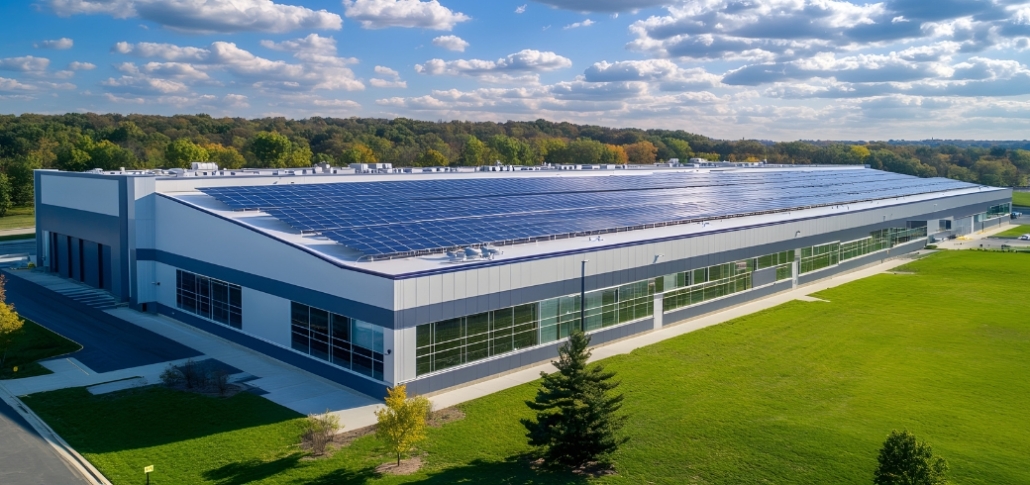
Is my roof suitable for commercial solar?
Commercial solar offsets electrical bills and creates substantial savings in your company’s bottom line, but it may not be a suitable option for all buildings and roofs.
Ensuring structural capacity and the roof load required for solar is the first step. The roof should be in excellent condition, lasting as long as the PV panels. While many roofs may be suitable for solar, planning is key to account for slope, orientation, layout planning, and local building codes.
Roofs suitable for commercial solar should be able to accommodate the load of PV panels. Low-sloped and pitched roofs can both be used, but orientation, shading, and even setbacks affect the suitability of a given roof for clean energy.
You may be asking yourself – Is my roof suitable for commercial solar panels? For a detailed account of what you should factor in for your business, this comprehensive guide will walk you through the planning stages before making a financial investment.
- Structural Capacity and Roof Loading
- Roof Age, Condition, & Remaining Service Life
- Roofing Materials & Attachment Methods
- Slope, Orientation, & Tilt Design
- Shading, Obstructions & Fire-Code Setbacks
- Usable Area & Layout Planning
- Codes, Permits & Incentive Landscape
- Warranty Coordination & Installer Qualifications
- Financial Analysis & Risk Management
Let’s dive into it!
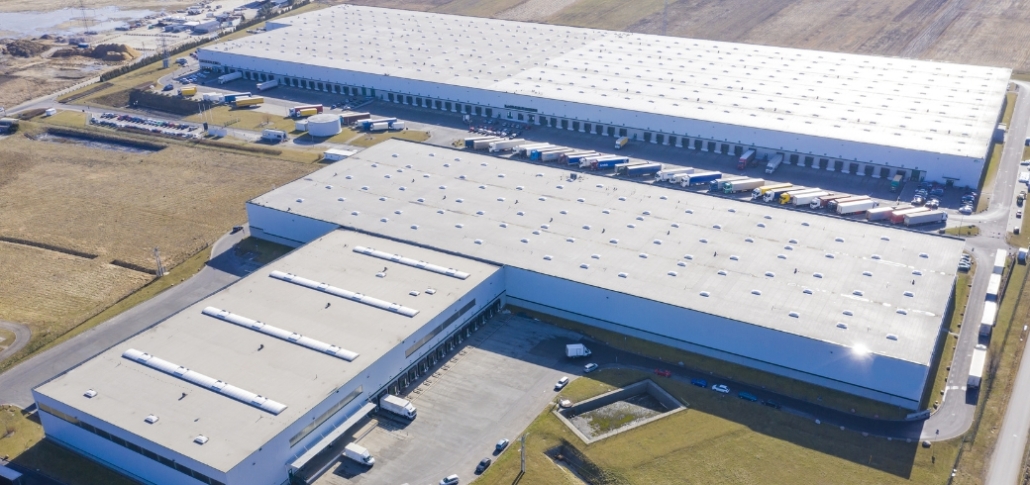
1. Structural Capacity and Roof Loading
Because each panel in a PV system weighs about fifty pounds, the structural capacity of the roof should be the first consideration. Oftentimes, a structural engineer consults to ensure that a roof can handle the load of both the dead weight of the panels as well as the wind and weather load. You may also face extra load allowances like snow, seismic, thermal, and even live loads.
Structural engineers assess a solar-ready roof by calculating the total weight of the panels. Dead loads are converted from weight into per unit areas. The goal is to ensure that the load is evenly distributed and to ensure that the roof can withstand forces that may occur in nature.
There are two major options for mounting rooftop solar: ballasts and mechanical attachments. Ballasts are a heavier system, which increases roof loads. However, they are ideal for low-slope roofs. If a roof cannot accommodate the heavier load, mechanically attached mounting racks are the best solution.
If a roof cannot currently withstand commercial solar panels, other options exist. The engineer can devise a system of reinforced roofing with beams and supports. Alternatively, the solar system may proceed forth with a lighter-weight system or a ground-mounted option.
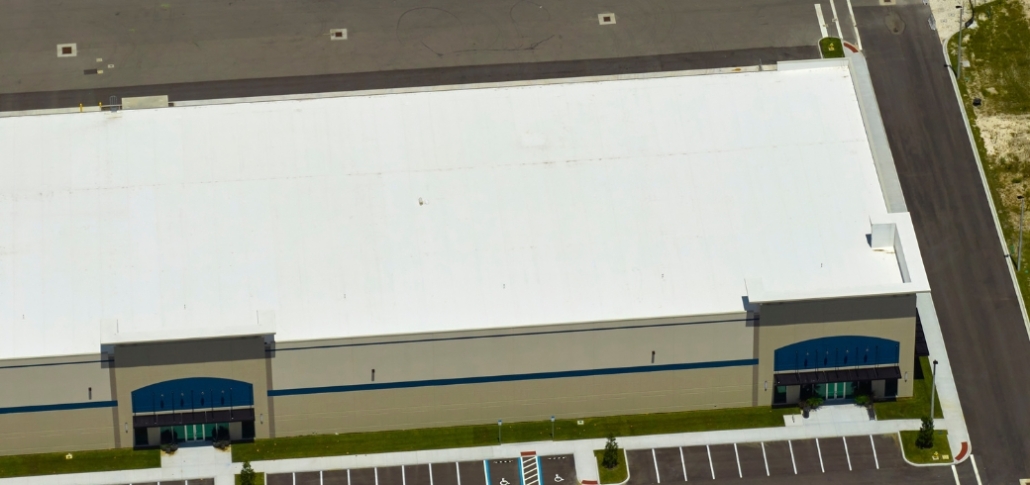
2. Roof Age, Condition, & Remaining Service Life
Once commercial buildings have been evaluated for structural capacity, it is time to turn attention to the condition of the roof itself. A quick survey of the condition can prevent long-term problems with leaks. After the PV panels are installed, these leaks will be more expensive to repair.
Consider the remaining lifespan of the roof. Roofs with a shorter lifespan than what is written in your PV array warranty should be repaired or replaced first. The goal is to match the roof lifespan with the lifespan of the solar system.
What should you look for when inspecting the condition of the roof and its remaining service life? These conditions are some of the first areas that will need consideration:
- Ponding: Roofs that hold water or create a dam-like effect will form standing water puddles. This can be detrimental to the condition of the roof and the solar panels.
- Membrane brittleness: Over time, weather deteriorates membranes on the roof, creating brittle materials. It tends to become more brittle as the lifespan reaches its end.
- Fastener corrosion: If the screws and fasteners used to secure the roofing are prone to corrosion, then it may be time to replace them prior to installing a solar system.
If these conditions impact a roof, restoration coatings and overlays are cost-effective answers. Full replacements are always an option for building owners who are conscientious about ensuring the roofing system is up to the task. Costs for a full replacement can range from $12 to $16 per square foot.
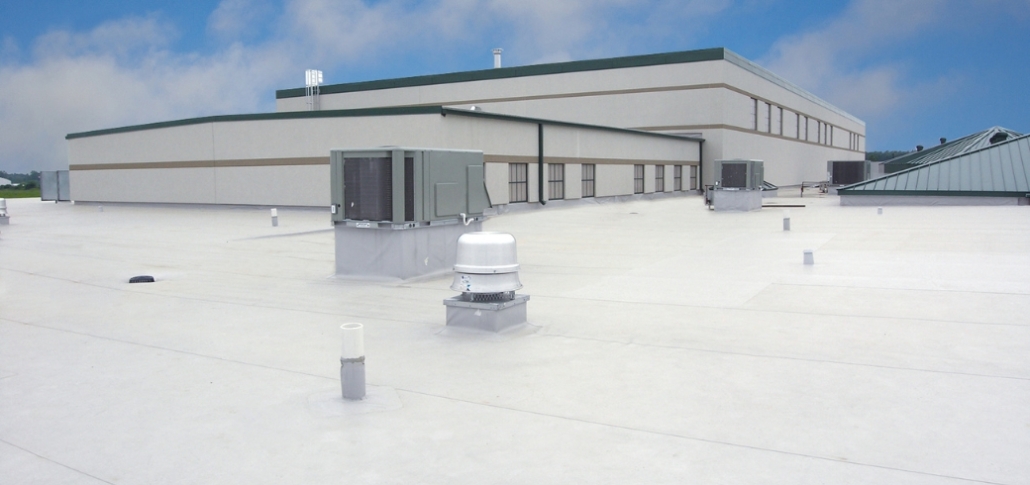
3. Roofing Materials & Attachment Methods
Is my roof suitable for commercial solar? Roofing materials and attachment methods are key. The commercial roofing that fares best is often standing-seam metal. They utilize no penetration and clamp-on panels that make rooftop solar more achievable. These secure clamps are often used in lightweight solar energy systems.
Another consideration for a solar system is single-ply membranes (TPO, EPDM, and PVC). When used with slip-sheets and heat-welded flashings, the solar system tends to last longer with fewer necessary repairs. BUR or modified bitumen using stanchion feet with waterproofing boots makes the low-slope roof stronger for the panels.
Keep in mind that special situations, including green roofs, corrugated roofs, or tile roofs, require special engineering. A roofing contractor can help ensure that the panel installation will last long-term with minimal damage to the roof itself.
Request A Free Quote
Speak To Our Roofing Specialists Today!
National Roofing & Solar offers expert commercial roof replacements, leak repairs, and solar upgrades, maximizing energy efficiency and ROI.
4. Slope, Orientation, & Tilt Design
A commercial property may have very little say in the pitch of the roof. A low-sloped roof may be ideal for a solar system. A lower pitch tends to increase safety while continuing to allow water to run off. Snow melt can be more problematic, though, reducing the production of clean energy.
A low-pitched roof may require tilted panels, a cost to consider before making an investment in renewable energy. Tilted panels gather more sun exposure, making them more efficient, but the tilt can create a higher wind load.
A pitched roof creates an improved angle to the sun without the need for additional stands in the panel installation process. Like a low-pitched roof (as opposed to a flat roof), the runoff for rain and snow is improved. The important thing to keep in mind is that the roof should have a pitch of 40 degrees or less.
Orientation is also important for the placement of solar panel installation. Solar energy is acquired more effectively with a north-south orientation, particularly if energy consumption peaks midday. On the other hand, east-west orientations are ideal for morning and evening use rather than afternoon consumption.
Bifacial models permit the solar energy system to create renewable energy from front and back positions. These are often used in north orientations and create more well-rounded energy for a whole day. Commercial properties that need maximum clean energy may want to invest in these more expensive orientations.
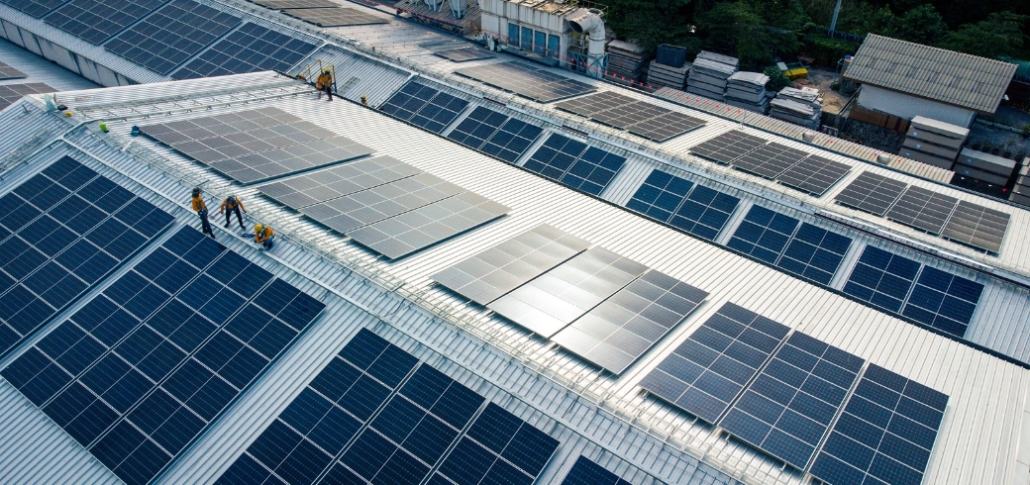
5. Shading, Obstructions & Fire-Code Setbacks
Commercial solar should account for the changes of the seasons in rooftop exposure to the sun. A commercial property owner needs to map seasonal shading from outside influences such as HVAC units, skylights, and even nearby structures that cast shade. A commercial property might have less sun and be less energy-efficient in some seasons, harming clean energy production.
Of course, there are also setback and access-aisle rules that must be followed for safety purposes. All solar installations must comply with IFC 2024 and NFPA updates. Setbacks range from 18 to 36 inches, depending on whether the PV panels take up less than or more than 66 percent of the roof.
Designing a unique solar system may require additional design tactics. To make the most of the available energy efficiency, array zoning may be best. These linked panels generate electricity in a more direct way from the PV panels. You may also consider small-equipment relocation or even elevated racks.
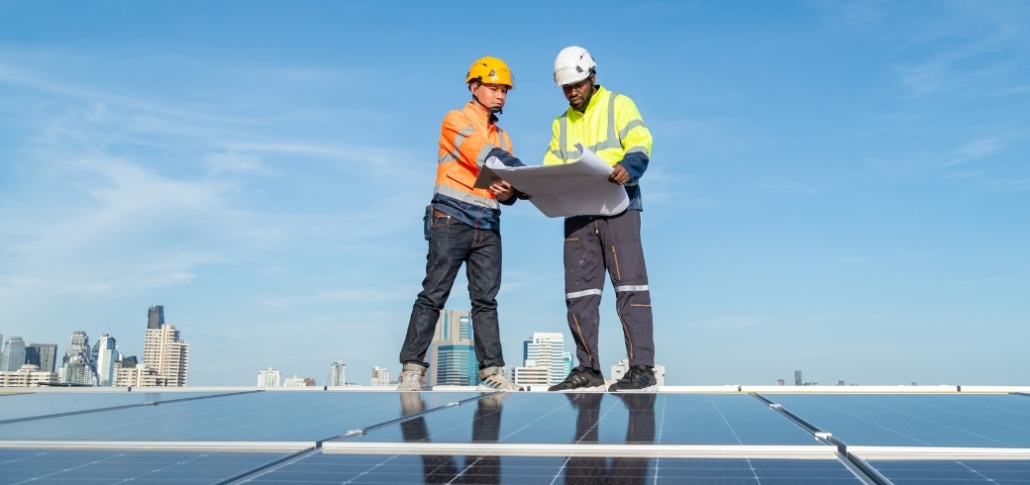
6. Usable Area & Layout Planning
Is my roof suitable for commercial solar? While some building owners may think they have a lot of available space for offsetting energy consumption with solar, it may be less than they thought. There is a significant difference between gross and net usable roof space after code setbacks are accounted for.
Gross area means the total area of the roof without accounting for zoning and the footprint of other structures that can impede a solar system. Net area is the more important figure, calculating the space that a solar system can occupy.
This may differ from rented space and gross space by excluding areas for setbacks and unusable space.
Another consideration for suitable commercial solar systems is layout. Most roofs accommodate the panels best in landscape orientation. Landscape can minimize height and decrease shading in between the panels. However, a portrait layout may be better with flat roofs.
Dual-tilt can increase your energy production, particularly if the roof is arranged with east-west configurations. You may also consider perimeter-zoning, moving the solar panels from the edge of the walls. It maximizes the daylight that hits the roof and complies with local building codes.
Considering system design, property owners should ensure that there is room for future rooftop equipment and clear paths for maintenance, should the roof need it at a later date.
7. Codes, Permits & Incentive Landscape
Installing solar panels in a commercial property must always comply with local building, electrical, and fire-code checkpoints. When working with a solar energy provider, they should be aware of all considerations before the first panels are installed. While many roofs are suitable for installing solar panels, building codes ensure safety.
Following the permit workflow is also key to installing solar panels. It starts with a structural letter, followed by an electrical single-line, and an interconnection study. A single-line diagram consists of a drawing that shows the scale and schematics of your new system. An interconnection study will look at how the power grid connects to the electric grid.
Of course, federal and state incentives can influence your design choices and timelines. The Solar Investment Tax Credit can offset your initial investment in a solar system.

8. Warranty Coordination & Installer Qualifications
Solar installations require much planning to protect the initial investment in both the quality of the underlying roof and the PV panels. A solar system should start with manufacturer-approved mounting details to maintain roof warranties long-term. These are one of the most basic building blocks of a solar system and should not be overlooked as a minor detail.
Before installation, joint walkthroughs with the roofing contractor should take place. When you want to know if your roof is suitable for commercial solar, you should require both pre- and post-installation walkthroughs to ensure that you receive the system that works best with commercial roofing.
To maintain your warranty on the solar system, owners need long-term maintenance agreements. Maintenance should cater not only to the solar array but also to the roof itself. This will help to manage your energy efficiency and protect both the building and the solar investment.
9. Financial Analysis & Risk Management
Is my roof suitable for commercial solar? The first thing you can do is measure both roof suitability and the internal rate of return (IRR). Measuring IRR against the cost of the investment in any necessary roof upgrades will pinpoint profitability. Calculate how much you could save with solar against your investment.
How long will it take to see the return of your initial investment, offset by tax credits and other financial incentives for solar installations?
This allows business owners to consider whether the move to solar is a wise one that will pay off based on the unique footprint of their system. You may calculate it as a percentage of the overall investment, showing how many years it will require before the entire cost is offset.
Don’t forget about operations and maintenance considerations that impact financial investments. For example, you may need roof inspections, inverter swaps, and even cleaning before the roof is in a condition where commercial solar can be installed.
Last but not least, financing structures can determine your out-of-pocket cost at the start. Cash purchases are the simplest, but there are also PPAs, leases, and C-PACEs. Solar power purchase agreements (PPAs) let the developer foot the bill for solar. In turn, they sell the power to the host at a fixed rate and pocket the profit.
Leases allow you to make payments toward ownership of the solar panels. C-PACEs are a bit more complex, allowing owners to borrow money for energy-efficient projects and make the repayment through assessments on property taxes. Financing sticks with the property if it sells before the full repayment has been made.
Request A Free Quote
Speak To Our Roofing Specialists Today!
National Roofing & Solar offers expert commercial roof replacements, leak repairs, and solar upgrades, maximizing energy efficiency and ROI.
Is My Roof Suitable for Commercial Solar?
Is my roof suitable for commercial solar? The answer might not be as straightforward as a simple yes or no.
Determining the structural capacity of the roof, planning the project, and then finding financing for a commercial solar installation are important components of a plan.
The best thing you can do upfront is ensure that you have a roof suitable for solar. If it requires a replacement or repair before solar arrays are installed, managing these costs is key.
When you are ready to determine roof suitability and take the first steps to solar, National Roofing and Solar can help. Contact us today for your assessment and start letting the sun power your business!



